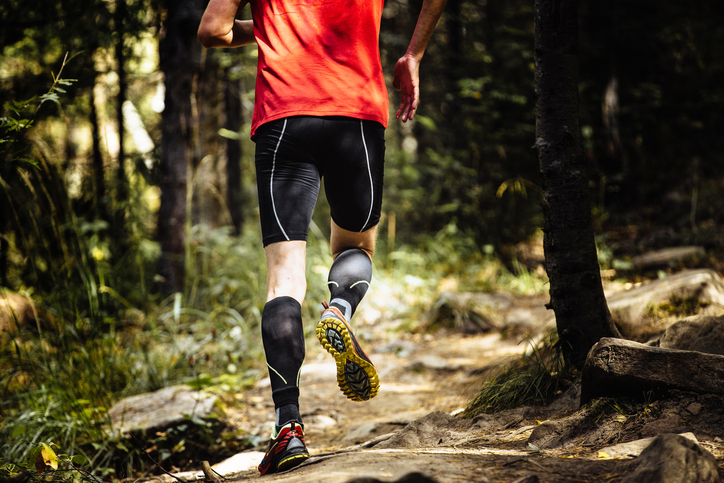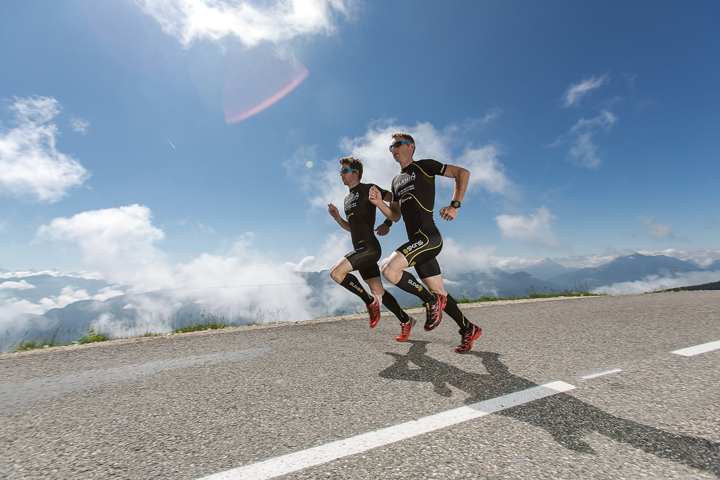Yes
Nick Morgan is the science and research consultant for SKINS Compression.
Firstly, there are a lot of companies that use the word “compression” without truly understanding it. It is not just a tight garment. A compression garment has two key ingredients – the necessary pressure and the appropriate size. It should apply a known pressure across the muscle belly – in this intance, the calf – based on the available research that demonstrates the benefits of compression on blood flow and circulation. It is also important that the garment is provided with a proven sizing guide. Too loose and there will be no beneficial effect; too tight and there is evidence to suggest this may have negative effects on performance.
For argument’s sake, let’s assume you have a compression sock that provides the correct pressure and fits appropriately. This can create a reduction in vein diameter, which results in an increased blood-flow velocity (imagine water flowing down a hose: squeeze the hose and the water flows out quicker), whereby blood is passing through the compressed veins at a faster rate. The result is an increased delivery of oxygen to the exercising muscles, increased blood lactate clearance, evidence of improved exercise economy, reduced perception of muscle soreness, and a reduction in markers of muscle damage. In short, those who wear appropriately fitted compression socks have the ability to perform endurance exercise better, while also facilitating a faster recovery.
As to the argument that many people run fast and injury-free without the aid of a compression sock, who’s to say these runners might not run even better with the aid of a compression sock? Ultimately, the issue is perhaps less about whether to wear compression or not, rather to ensure that if you do, you find a garment that has a proven pressure profile, clear sizing guide, and evidence that the company themselves has put its garment to the test in the laboratory.
No
Jess Hill is a senior lecturer in sport and exercise physiology at St Mary’s University, London
Scientific research examining the effects of compression garments on running performance is inconclusive. Research has observed improvements in total work completed and maximum speeds achieved. However, several studies have demonstrated no effect on physiological parameters important to performance, such as oxygen uptake and blood lactate parameters. More research is needed to better understand the performance-enhancing effects of various compression garments – if, indeed, there are any.
There is some evidence to suggest that compression garments aid recovery. A study on marathon runners observed that those who wore compression garments immediately after a marathon experienced less muscle soreness than those who did not wear garments. Another study reviewing the effects of a range of different garment types in a range of different exercise conditions observed that compression garments can improve recovery of muscle function and reduce the severity of muscle soreness. However, there is another body of research that has found no beneficial effects of compression on recovery.
Recent research indicates that this may be due to how well the compression garment fits the individual. If the garment does not fit properly, the individual may not be receiving adequate levels of compression to elicit a physiological benefit. Again, more research is needed in this area.
While the science behind the use of compression garments is inconclusive, as stated above for both performance and recovery, perceived benefits are often experienced by athletes, which will influence their decision to use them. I think if your garment fits properly, it may be possible to achieve benefits when wearing the garments to improve performance during a run, but perhaps it’s more likely to aid recovery after. On the evidence so far, though, you’d have to say the physiological benefits of wearing compression garments are inconclusive.








